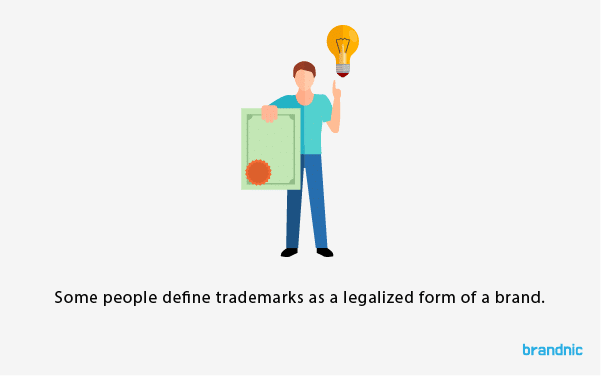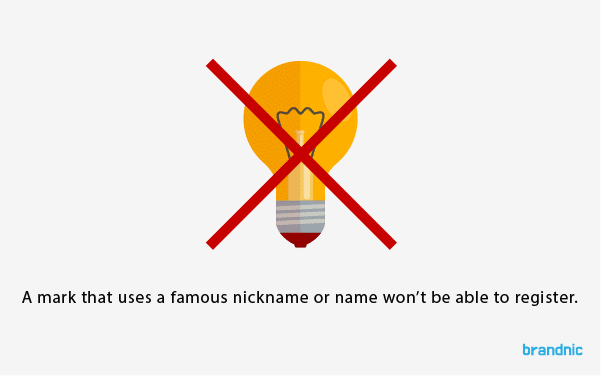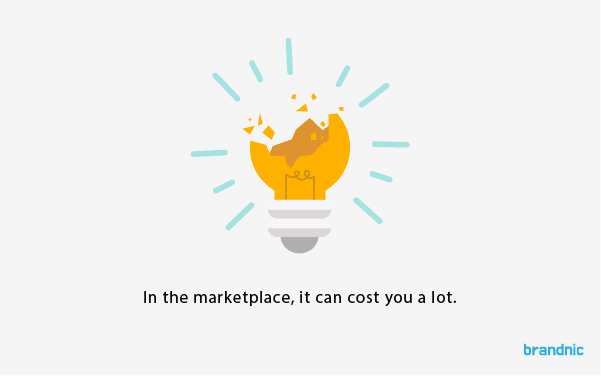Read Time: 11 minutes
Table of Contents
1. What are trademarks?
2. Types of trademarks
3. What types of trademarks can be registered?
4. What cannot be trademarked
5. Reasons to understand types of trademarks
6. Things to take into account
7. Trademark FAQ
8. Common mistakes
9. Steps to start filing
10. Final considerations
11. You can count on us
What are trademarks?
Some people define trademarks as a legalized form of a brand. In fact, a word, phrase, logo or symbol can be considered a trademark as long as they identify a specific source of products or services.
The reason is simple. It is the legal way to distinguish some products from others and avoid disputes over ownership.
For instance, Google, Coca Cola, and Facebook are some of the most known trademarks that once went through this process.

Understanding trademarking.
You may think that registering a trademark is a big hassle, but let us tell you that getting your company trademarked is a highly recommended investment. Some remarkable benefits:
- Inspire trust in your target audience.
- Appreciate in value over time.
- Higher traffic on websites.
- It’s easy for customers to identify you.
Now that trademarks caught your attention, we can offer you a guide on how to register them in an effective way. This process can either be done via a trademark office or through common law.
We’ll continue with this up ahead, but now we’ll guide you through the first step you should follow: learning about the types of trademarks.
Types of trademarks

Types of trademarks out there.
1. Too General Marks
Generic trademarks are not allowed to be registered for the fact that they aren’t specific enough to be distinguished from other companies.
Let’s say you’d like to register a mark called “The hairdresser’s” and a trademark office agrees to it. It would mean that all other shops won’t be able to sell hairdressing services anymore.
The only way to register a brand name that has fallen into generic classification, it’s to specify more details about it.
Think about the characteristics and qualities that make your business unique.
However, you have to be careful not to describe too much because you may run into a descriptive trademark.
2. Descriptive Marks
It’s the easiest to create in the marketplace as well as the generic one. You just have to identify some specific characteristics of your products or service and turn them into your company’s name.
For instance, the “NY Spicy chicken sandwich” describes what exactly the company does. Hence, it’s a mistake that affects your marketing efforts.
It sounds like a good plan until you face trademark laws which dictate that all trademarks must have a meaningful name valuable enough for advertising. It’s the only way customers can identify the mark as your brand.
3. Suggestive Marks
We are getting more creative and suggestive marks are here to show us that. It means that a trademark is indirectly related to the products or services it offers.
In other words, customers must figure out what the product or service offers through their imagination.
For example, Pinterest, Microsoft, and Netflix are considered to be suggestive trademarks types.
Some people consider it an intelligent way to use references to your benefit. Nonetheless, there are even more unique ways to create an interesting trademark.
4. Fanciful Marks
Unique mark names are here to stay and fanciful trademarks are good proof of it. This category of trademarks includes all those mark names and logos that have never existed before.
It’s a great option for those trademark owners who are seeking trademark protection fast. Moreover, it brings many ideas for marketing strategies and campaigns.
Kodak, Exxon, and Adidas are well-known companies that fit in this kind of trademark.
However, if you aren’t good at inventing words, you can still choose some real ones and use them as an arbitrary trademark.
5. Arbitrary Marks
Arbitrary marks are real words that have nothing to do with the product or service. It’s a clever tool to create catchy trademarks that people will feel identified with while avoiding being classified as generic or descriptive.
Some examples of this: Apple, Amazon, Dove are successful companies that are currently in the arbitrary mark category.
6. Certification marks, collective membership marks, and collective trademarks.
These trademarks help identify the type of ownership it has been registered. For instance, a certification mark determines which authority will give certification of goods. On the other hand, collective membership marks are for members of a specific organization or association.
It means that it helps distinguish those products or services that don’t belong to the group as well as it shows the membership of every partner.
Finally, collective trademarks protect groups that own design, logo or symbol together.
What types of trademarks can be registered?
Learning about the different types of trademarks can be a lifesaver for your startup. Yet, you finally want to be sure which marks can be registered.

Types of trademarks you can register for your business.
To sum up, descriptive and generic trademarks are mostly rejected by trademark offices such as the United States Patent and Trademark Office (USPTO). Take into account that some exceptions may apply.
Fortunately, trademark categories such as arbitrary, fanciful and suggestive are likely to be registered.
However, there’s another trademark category that is unusual, but sometimes acceptable for trademark laws.
Non-conventional trademarks
Also called unconventional marks, they are new kinds of trademarks that don’t fit properly in any of the previous categories.
They are usually difficult to register, but they can still fulfill trademark functions. Moreover, they often get recognition for their distinctive characteristics. They are divided into subcategories:
- Sound mark: Some musical notes, for example, can be considered unique features that are distinctive enough to be sound marks.
- Shape Mark: Products and packaging that have specific shapes can be classified as shape marks. For instance, bottles and ornamental lamps.
- Color Mark: If one color becomes a specific feature for a particular business owner, it can be registered as a trademark. Barbie pink and Tiffany Blue are good examples of this.
- Smell marks: Unique smell that is directly related to a certain good or product can be registered as a trademark. For example, strawberry toothbrushes and bubble gum scent for sandals.
We also want you to understand that just because a trademark is not part of these categories, it doesn’t mean it can be registered.
What cannot be trademarked
There are other cases where you won’t be able to register your business. Each case is studied independently and they usually don’t fall in any category.

Things cannot be trademarked.
- A mark that has become conventional in the current language. For example, “Karaoke” and “chef” are now common in the English language.
- A mark that is too similar to a well-known trademark won’t be allowed to be registered. In other words, trying to register a mark called “Colgate” may be difficult since it can cause confusion with the famous trademark “Colgate”.
- A mark that uses a famous nickname or name won’t be able to register it as a trademark unless the business is previously allowed to use the name by its original owner.
Reasons to understand types of trademarks
Learning about the different types of trademarks is sometimes underestimated, but it’s actually very important to understand how trademark protection works and how it can benefit your growing business.

Understanding different kind of trademarks.
Understanding types of trademarks lets you know whether you should modify your mark and how likely you are to have your trademark approved. Other benefits that trademarks will bring:
1. Trademark distinctiveness
Consumers will identify your mark easily as well as its goods or services. Categories of trademarks allow a more organized process of application and reduce any risks of confusion.
2. Brand loyalty
A logo, symbol or slogan can determine your success in the marketplace and, luckily, they all can be trademarked.
Don’t miss our expert guide on slogan trademarking
Once you understand in which category your business features fall into, it will be easy for you to create memorable marketing strategies and gain the best reputation among your target audience.
To put it simply, knowing what kind of business you are building will help you achieve brand loyalty almost immediately.
3. Protection against trademark infringement
Almost all kinds of trademarks are protected by the Lanham Act which is crucial in case of infringement.
This is the type of law you want by your side since it is the only one that allows you to produce and profit from the mark and restricts other business owners to use it without your consent.
We can assure you that you’ll feel safer buying a trademark than risking your business in the marketplace.
Remember when a person starts using a similar mark to yours and neither you nor the other business owner has a trademark, you will be involved in a long and tiring legal process that doesn’t guarantee the ownership of the mark.
In the trademark world, it’s better safe than sorry. Therefore our suggestions are to always assess to your mark and find what category is the most appropriate for it.
Lack of research will be a waste of money and time for everyone, but fortunately, if you are reading this guide it means you are going in the right direction. Let’s look at some indispensable tips about your type of trademark.
Things to take into account
Let’s say you already determine your kind of trademark and you want to proceed with the application. Luckily for you, all the basic steps are on the USPTO’s website and the process is simple in general.

Things to take into consideration before getting started.
However, there are several details that people ignore and they can quickly become a headache.
Here you have some frequently asked questions about any trademark process and what could happen if you don’t understand the types of trademarks on time.
Trademark FAQ
Is there any difference between the kinds of trademarks?
The different categories we mentioned above help determine how unique a mark is and how much protected it will be in legal cases.
The main difference is that, depending on the type of trademark, a federal court will be able to identify more effectively which authority owns the mark in discussing.
Is a service mark a type of trademark?
A service mark is indeed considered a type of trademark. That is to say, it is the category for a company’s services. They usually use slogans without logos compared to other types of trademarks that include other features.
You should register a service mark as well as any other type of trademark since intellectual property (IP) is handled the same way for this process.

Trademark FAQ’s explained in details.
Is copyright a type of trademark?
These can be some of the commonly confused words in the financial picture, but they are indeed different from one another.
They both use IP protection for different types of assets, but while trademarks help identify a company brand, copyright protects artistic and literary works.
For instance, JK Rowling can trademark the name and logo of “Harry Potter”, but she would have to copyright the book and the movies.
Is there a deadline?
There isn’t a deadline for any type of trademark. However, starting an application process doesn’t ensure any protection against other businesses.
We highly recommend you to finish registering a trademark as soon as you can. Remember that this type of process is the only one that you can use as a defense in any future dispute.
People usually get too relaxed when they realize there isn’t an important deadline to file all the required documents, but this is actually a common mistake that can affect your company enormously.
Let’s look at some “don’ts” when applying for a trademark.
Common mistakes
We understand making mistakes is a human thing, but in the marketplace, it can cost you a lot. Therefore, you should be aware of some details people take for granted.
The first one would be using TM (unregistered trademark) and SM (unregistered service mark) symbols without ever completing the registration process. We already said that there aren’t any deadlines for the application, but symbols such as TM and SM don’t hold any legal importance in relation to ownership.

Common mistakes when registering a trademark.
Once you finish what you started, you’ll see that there won’t be any legal restrictions for your business.
Another common mistake is not to search properly for similar trademarks. This is one of the crucial steps while registering your business since there can be other previous trademarks that have been canceled and now they are “dead”.
Moreover, you don’t know if there’s another business owner that has a similar mark, but as in your case, he hasn’t registered it as a trademark.
If that is the case, you must know that the original owner can prove the mark is his through common law even though he never actually registered it.
Steps to start filing
Once you determine what type of trademark your business belongs to, you can start filing the necessary paperwork at the USPTO.
Remember that you must have a U.S licensed attorney if you are a foreign domiciled applicant.

Steps to start filing your trademark application.
1. Check for any existing trademarks
The first step before filing is to check any similar trademarks to yours at the Trademark Electronic Search System (TESS).
This USPTO’s database can save you a lot of money and time.
USPTO confirms real-time trademark confirmation … since it can tell you the status of a pre-existing trademark and who the owner is.
In the case that the trademark that you want to use already exists, but no one is using it (also called dead trademarks), you still have some chance to buy it through another different filing process.
2. Complete the trademark application
All the necessary documents are explained at the USPTO’s website. Some of them are an intent-to-use unit, post-registration division office action and petitions office letter.
You should know that this process is completely online.
There’s a processing fee that ranges from $200 to $300 depending on the type of goods or services.
Remember to submit your documentation along with a layout of the mark, colors, and anything that identifies it.
3. Check your trademark status regularly
Don’t think that sending all required paperwork means that you already have the trademark.
Now you are in the review process and it can take some months before the assigned examiner determines the validity of your business.
During this process, you may have to update more information and documents if the examiner requests it, therefore it is crucial that you keep monitoring your application through Trademark Status and Document Retrieval (TSDR).
4. Start using your trademark
Once your trademark is approved, you are free to start using your trademark.
However, you should take into account that USPTO publishes all new trademarks so other parties can check it doesn’t infringe on their own business name.
This is when the Trademark Trial and Appeal Board should help you find a solution. Yet, you should know that these cases occur mostly for lack of proper research and professional guidance.
5. Protect your rights
The USPTO doesn’t monitor the use of marks which means it won’t let you know if another business owner starts using a similar trademark.
The best you can do is to check regularly other similar companies and bring any legal action in case of infringement.
The USPTO will soon send you a certificate of registration which you should always keep around.
This doesn’t mean you should forget about USPTO. In fact, they sometimes request maintenance documents that you should update from time to time.
Final considerations
Trademark offices protect your mark, but they don’t advise you on how to create your business name. You should have clearly in mind all the features of your mark and the goods of your business.
The USPTO also requests identification of the type of trademark as well as the type of goods and/or services.
A single mistake such as classifying an apparel business in the technology category can be reason enough to delay an application process.
Be specific as much as you can and pay a lot of attention when filling the application form. The USPTO usually asks to select one of the three possible formats at its website in order to identify your mark faster. They also use it to print your mark in their Official Gazette (a weekly online publication).
You can count on us
We recommend finding professional help in order to avoid any mistakes and complete the process as effectively as possible.
Brandnic is your solution when registering your type of trademark. We support your business ideas in an efficient way as well as we ensure our customer 100% secure transactions.
Moreover, each purchase comes with a domain name, logo design, free logo revision, and common law trademark.
Let Brandnic help you and contact us today.
















